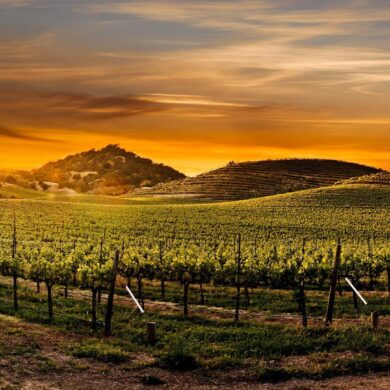Napa Valley, with its rolling hills, sun-soaked vineyards, and world-renowned wines, is a region that commands admiration and respect. But...
India's wine industry, though still emerging on the global stage, is rooted in a rich history that dates back to the Indus Valley civilization. Today, Indian wines, crafted from indigenous grape varieties like Anab-e-Shahi, Chenette, and Sultanina, offer a unique taste of the subcontinent's diverse terroir. These wines, with their bold fruit and spice flavors and a distinctive minerality, stand apart from their Western counterparts, reflecting the land's unique climate and cultural heritage. As India navigates the delicate balance between tradition and modernity, its wines are beginning to tell a story that is as complex and varied as the country itself.
Sicily, the largest island in the Mediterranean, is renowned for its vibrant culture, stunning landscapes, and, notably, its wine. Among the many varietals that the island produces, one stands out for its historical significance and unique characteristics: Perricone wine. This story delves into the journey of Perricone, from its ancient roots to its modern revival, and explores why this wine is a true hidden gem of Sicily.
Perricone, also known locally as "Pignatello," traces its origins back to ancient times. The wine has been cultivated on the island for centuries, with its name believed to be derived from the Italian word "pigna," meaning pine cone, a nod to the shape of its grape clusters. Perricone thrived in the fertile soils and favorable climate of Sicily, becoming a staple in local viticulture.
However, the phylloxera epidemic of the late 19th century, a devastating pest that ravaged vineyards across Europe, nearly wiped out Perricone. Many growers abandoned the varietal in favor of more resilient and commercially viable grapes, leading to a significant decline in its cultivation. For much of the 20th century, Perricone remained a forgotten treasure, overshadowed by more popular Sicilian wines like Nero d'Avola and Frappato.
The revival of Perricone began in the early 21st century, as winemakers started to rediscover and appreciate its unique qualities. This renaissance was driven by a growing movement towards preserving indigenous grape varieties and embracing sustainable farming practices. Winemakers recognized that Perricone, with its deep color, robust tannins, and complex flavor profile, had the potential to produce exceptional wines that could stand out in the global market.
Modern Perricone vineyards are meticulously managed, with a focus on organic and biodynamic farming methods. The grape thrives in Sicily’s diverse terroir, which ranges from coastal plains to mountainous regions, each imparting distinct characteristics to the wine. The hot, dry climate and volcanic soils contribute to Perricone’s bold flavors and rich aromas, making it a true reflection of its environment.
Dubai is rapidly emerging as a global wine destination, blending luxury, innovation, and cultural sensitivity. With its high-end wine lounges, Michelin-starred restaurants, and the upcoming UAE Vine Festival, the city is transforming its reputation beyond opulence into a hub for wine enthusiasts. Explore how Dubai is redefining the wine experience in the Middle East, offering a unique blend of tradition and modernity that’s captivating the global wine community.
Explore the hidden gems of wine tourism as Business Insider highlights the best underrated wine regions. Visit Alentejo in Portugal, known for its full-bodied reds and aromatic whites from indigenous varietals like trincadeira and antão vaz. In Southern Sweden, discover high-acidity white and sparkling wines from hybrid grapes like solaris. South Africa's Hemel-en-Aarde Valley offers exceptional Pinot Noir and rustic charm, while Goriška Brda in Slovenia, the "Tuscany of Slovenia," blends medieval charm with innovative winemaking. These regions offer rich cultural and historical experiences, making them must-visit destinations for wine lovers.
Introduction Nestled in the picturesque landscapes of Western Georgia, the ancient grape variety known as Tsolikouri has been cultivated for...
Washington State is rapidly gaining recognition as a hub for innovative winemaking, challenging traditional methods and embracing experimental techniques that highlight the region's diverse terroir. From the use of ancient amphorae to ferment wines, to the introduction of lesser-known grape varieties, Washington's winemakers are crafting unique flavor profiles that set them apart on the global stage. As sustainability becomes a core value in their practices, these wineries are not only producing exceptional wines but also paving the way for the future of American winemaking.
Nestled in the heart of the Middle East, Israel’s burgeoning wine industry offers a blend of ancient traditions and modern...
Nestled in the heart of the Bordeaux region, Château Margaux stands as a paragon of winemaking excellence and historical grandeur....









